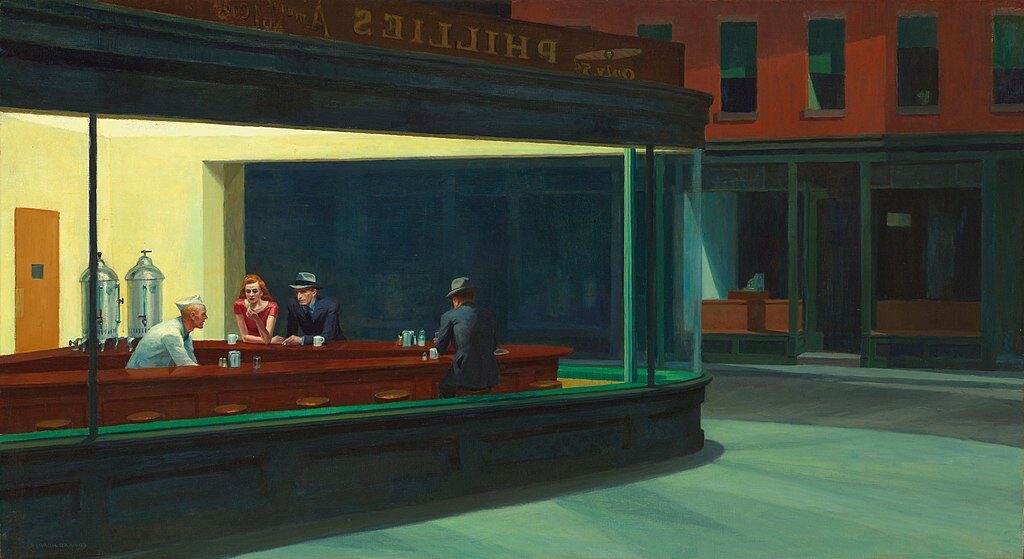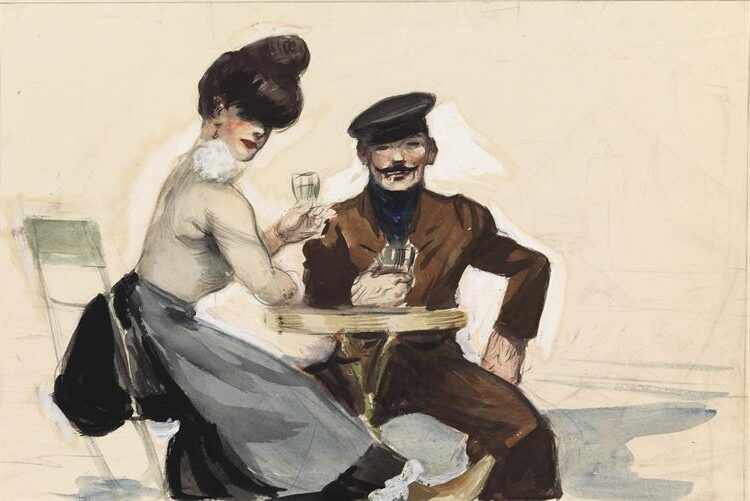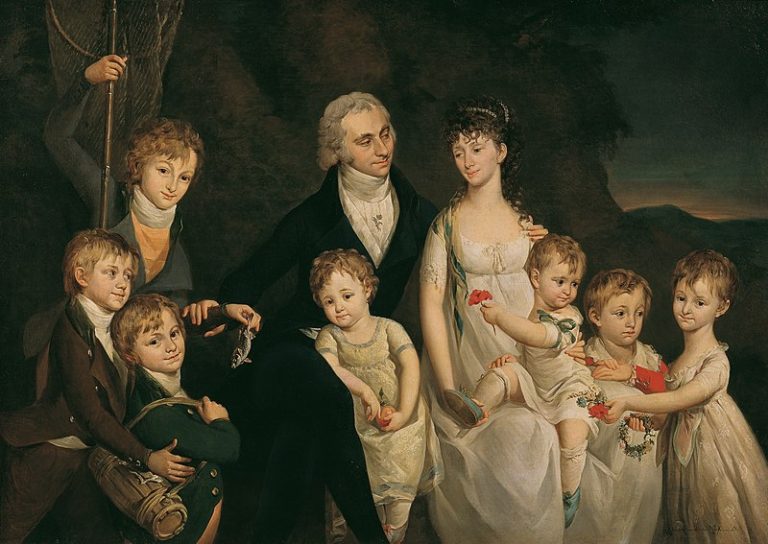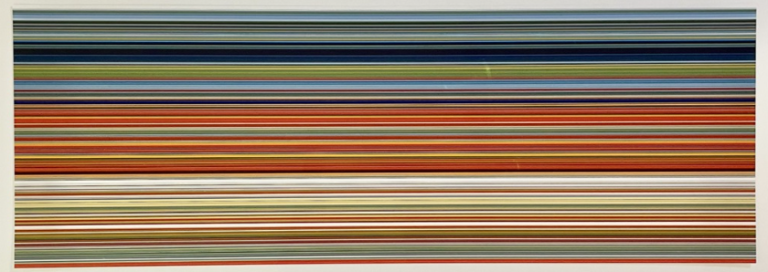Edward Hopper Painter: Master of American Realism and Urban Solitude
Born: July 22, 1882, Nyack, New York, U.S.
Death: May 15, 1967, Manhattan, New York City, U.S.
Art Movement: Realism
Nationality: American
Teachers: William Merritt Chase and Robert Henri
Institution: Parsons School of Design
Edward Hopper Painter: Master of American Realism and Urban Solitude
Life and Career of Edward Hopper
Edward Hopper’s journey as an artist spanned nearly six decades. His career evolved from commercial illustration to becoming one of America’s most recognized painters of urban and rural scenes.
Early Life and Education
Edward Hopper showed artistic talent from a young age. His parents encouraged his creative interests by providing him with art supplies and books.

Early Sunday Morning (1930) by Edward Hopper
In 1899, Hopper began studying at the New York School of Art under teacher Robert Henri, a member of the Ashcan School. This influential movement focused on realistic scenes of daily life.
From 1906 to 1910, Hopper made three trips to Paris. Surprisingly, he remained largely uninfluenced by the modernist movements thriving there. Instead, he admired the work of Edgar Degas and Édouard Manet.
After returning to America, Hopper struggled financially. He supported himself through commercial illustration work for magazines and advertisements, a job he disliked but that taught him valuable skills.
Development of Painting Style
Hopper’s distinctive style emerged fully in the 1920s after his marriage to fellow artist Josephine Nivison in 1924. She helped promote his work and served as his primary model.
His first major success came with the painting “House by the Railroad” (1925). This painting established his characteristic themes: isolation, contemplation, and the quiet drama of everyday life.
Hopper worked meticulously, often producing only one or two paintings per year. He preferred to paint from memory rather than direct observation, allowing him to distill scenes to their emotional essence.
His palette featured sharp contrasts between light and shadow, creating dramatic effects that enhanced the psychological depth of his work. Hopper’s subjects—gas stations, hotel rooms, restaurants—became iconic representations of American solitude.
Significant Life Events
The Great Depression paradoxically coincided with Hopper’s rising success. In 1933, the Museum of Modern Art gave him his first major retrospective exhibition.

Morning Sun (1952) by Edward Hopper
Hopper and Josephine purchased a cottage in Truro, Massachusetts, in 1934. This Cape Cod location inspired many of his most famous landscapes and architectural paintings.
Their marriage was complex and often strained. The couple had no children, and Josephine sacrificed much of her own artistic career to support her husband’s work.
Throughout World War II and the 1950s, Hopper’s reputation continued to grow while his style remained consistent. His 1942 painting “Nighthawks” became his most recognized work and an icon of American art.
Hopper died in his New York studio on May 15, 1967, at age 84, leaving behind over 3,000 works that captured the unique character of American life.
Major Works and Artistic Themes
Edward Hopper created iconic paintings that explore solitude, modern city life, and quiet contemplation. His distinctive use of light and stark compositions reveal deeper emotions beneath seemingly ordinary scenes.
Nighthawks
“Nighthawks” (1942) stands as Hopper’s most recognized masterpiece. The painting depicts four figures in a downtown diner late at night, viewed through a large glass window.

Nighthawks (1942) by Edward Hopper
The scene captures urban loneliness despite people being together in the same space. The harsh fluorescent lighting creates a stark contrast against the dark, empty street outside.
The precise geometric composition and the diner’s glass enclosure emphasize the separation between the individuals and the outside world. Art historians often interpret this work as a commentary on isolation in modern society.
The painting resides in the Art Institute of Chicago and has influenced countless films, photographs, and other artistic works.
Automat
“Automat” (1927) portrays a solitary woman sitting alone in a self-service restaurant. She stares into her coffee cup, lost in thought while still wearing her coat and hat.

Automat (1927) by Edward Hopper
The large window behind her shows only darkness, reinforcing her isolation. The woman’s reflection appears faintly in the glass, creating a ghostly double image.
The painting exemplifies Hopper’s interest in urban loneliness and the experience of women in public spaces. The automat—a modern convenience of the era—becomes a setting for private contemplation.
The composition uses strategic lighting that illuminates the woman while leaving much of the surroundings in shadow. This creates an intimate yet melancholy atmosphere that draws viewers into her quiet moment.
Cape Cod Morning
“Cape Cod Morning” (1950) features a woman looking intently through a bay window of a New England house. Her posture suggests anticipation or watchfulness.

Cape Cod Morning (1950) by Edward Hopper
The painting demonstrates Hopper’s shift to rural and coastal subjects in his later work. The strong morning light creates dramatic shadows across the house’s exterior.
Unlike many of his urban scenes, this work incorporates natural elements with the wooden house set against a background of trees. However, the emotional tone remains consistent with his city paintings.
The woman’s gaze directs outward rather than inward, suggesting curiosity about the external world. This creates tension between interior domestic space and the unseen landscape that captures her attention.
Use of Light and Shadow
Light functions as a crucial emotional element in Hopper’s work. He often used sharp, raking light to create dramatic shadows and highlight architectural forms.
Hopper mastered the portrayal of specific light conditions—harsh midday sun, early morning rays, or artificial evening illumination. Each lighting scenario creates a distinct psychological mood.
His shadows aren’t merely decorative but function as compositional elements that guide the viewer’s eye. Dark areas frequently frame illuminated focal points.
The contrast between light and shadow symbolizes the division between public and private life, known and unknown, safety and uncertainty.
Hopper’s training as an etcher influenced his approach to light, giving him exceptional control over tonal values. This technique helps create the distinctive atmosphere that makes his work immediately recognizable.
Influence and Legacy
Edward Hopper’s distinctive style and vision left an enduring mark on art history. His unique approach to depicting American life continues to inspire generations of artists and has become a significant part of cultural memory.
Impact on Modern Art
Hopper’s work fundamentally changed how artists portrayed modern American life. His focus on isolation in urban settings created a new visual language for expressing alienation. Artists of the Pop Art movement, including Andy Warhol, adopted his interest in everyday scenes and commercial settings.

Manhattan Bridge Loop (1928) by Edward Hopper
Filmmakers like Alfred Hitchcock and Wim Wenders drew from Hopper’s dramatic use of light and shadow. His cinematic compositions influenced how directors frame their shots and create mood through lighting.
Hopper’s psychological depth also affected the development of narrative painting. His ability to suggest complex stories within a single frozen moment helped legitimize representational art during the rise of abstraction.
Inspirations to Other Artists
Many contemporary painters directly reference Hopper’s iconic images. Artists like Eric Fischl and Richard Estes developed their realistic styles with Hopper as a touchstone.
The photographer Gregory Crewdson creates elaborately staged scenes that echo Hopper’s sense of unresolved narrative tension. His photographs capture similar moments of psychological isolation.
Writers and poets find inspiration in Hopper’s visual storytelling too. His painting “Nighthawks” has inspired numerous poems, short stories, and even music.
Notable Artists Influenced by Hopper:
- Richard Diebenkorn
- David Hockney
- Mark Rothko
- George Segal
Preservation of His Work
The Whitney Museum of American Art holds the largest collection of Hopper’s works. This includes over 3,000 paintings, drawings, and prints donated by his widow Jo Hopper.

Couple Drinking (1906–1907) by Edward Hopper
Many of his most famous works like “Nighthawks” and “Early Sunday Morning” are carefully preserved in major museums. These institutions regularly feature his paintings in special exhibitions.
Hopper’s home and studio in Truro, Massachusetts has been maintained as a historic site. Art enthusiasts can visit to see where he created many of his Cape Cod landscapes.
Digital preservation efforts have made his work accessible worldwide. High-resolution images of his paintings are available online, allowing new generations to study his techniques and themes.
Frequently Asked Questions
Edward Hopper remains one of America’s most recognizable and influential painters. His distinctive style, famous works, and lasting impact continue to generate interest and questions from art enthusiasts worldwide.
What are the defining characteristics of Edward Hopper’s painting style?
Hopper’s style features stark contrasts of light and shadow, creating dramatic effects that highlight his subjects. He used simplified forms and clean lines to create compositions with strong geometric elements.
His color palette typically included cool blues, warm yellows, and stark whites that enhanced the emotional tone of his scenes. Hopper often depicted isolated figures in ordinary settings, conveying a sense of loneliness and contemplation.
His unique perspective angles and compositional framing guide viewers to focus on specific elements within his paintings. This deliberate technique helps create the psychological tension for which his work is famous.
Which museums house the most significant collections of Edward Hopper’s work?
The Whitney Museum of American Art in New York holds the largest collection of Hopper’s works, including over 3,100 paintings, drawings, and prints. This extensive collection was largely donated by Hopper’s widow, Josephine.
The Museum of Modern Art (MoMA) in New York features several important Hopper paintings, including “House by the Railroad” (1925). The Art Institute of Chicago displays his iconic “Nighthawks” (1942), arguably his most famous work.
The National Gallery of Art in Washington, D.C. maintains numerous Hopper paintings and watercolors. Regional museums like the Provincetown Art Association and Museum also house significant Hopper works, reflecting his connection to Cape Cod.
Can you describe the historical and cultural influences on Hopper’s art?
Hopper worked during periods of significant American transformation, including the Great Depression and World War II. These eras of uncertainty and change influenced his themes of isolation and modern American life.
The rise of cinema in the early 20th century affected Hopper’s compositional techniques. His cropped scenes and dramatic lighting show clear connections to film noir visuals and storytelling approaches.
European impressionists and realists like Edgar Degas and Édouard Manet influenced his early work during his Paris visits. However, Hopper developed his unique American vision after returning home, combining European techniques with distinctly American subjects.
How did Edward Hopper’s early career and personal life shape his approach to painting?
Hopper began his career as a commercial illustrator, which taught him to convey stories through single images. This experience influenced his later painting style, where each work suggests a larger narrative beyond the canvas.
His marriage to fellow artist Josephine Nivison in 1924 provided both personal and professional stability. Josephine often served as the model for female figures in his paintings and managed the business aspects of his career.
Hopper struggled for recognition until his late 30s, experiencing rejection and limited sales. This period of artistic isolation likely contributed to the themes of solitude and patience that characterize his mature work.
What is the significance of ‘Nighthawks’, and how does it reflect Hopper’s thematic concerns?
“Nighthawks” (1942) represents Hopper’s masterful exploration of urban isolation. The painting depicts four figures in a late-night diner, separated from the empty street by a large glass window.
The harsh artificial lighting creates dramatic contrasts that emphasize the psychological distance between the figures. Despite being in close proximity, the characters appear lost in their own thoughts, exemplifying Hopper’s interest in loneliness amid company.
Created during World War II, the painting captures American anxiety during uncertain times. The empty street outside the diner suggests vulnerability, while the brightly lit interior offers temporary refuge but little genuine connection.
How has Edward Hopper’s work influenced modern art and contemporary artists?
Hopper’s cinematic compositions influenced filmmakers like Alfred Hitchcock, Wim Wenders, and David Lynch. His use of framing, lighting, and psychological tension appears in countless films that explore alienation and urban life.
Photorealist painters like Richard Estes built upon Hopper’s approach to American scenes but added greater detail. Contemporary painters including Eric Fischl and Gregory Crewdson have expanded on Hopper’s narrative tension in their own explorations of American life.
Popular culture frequently references Hopper’s imagery, particularly “Nighthawks.” The painting has been parodied and reimagined in advertisements, cartoons, and album covers, demonstrating its enduring place in American visual consciousness.








